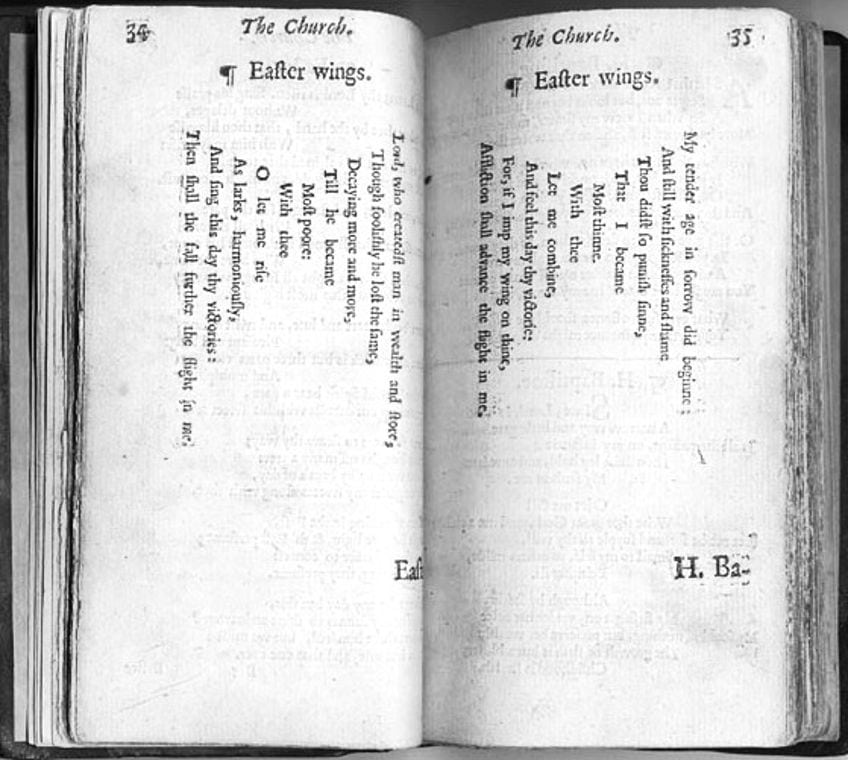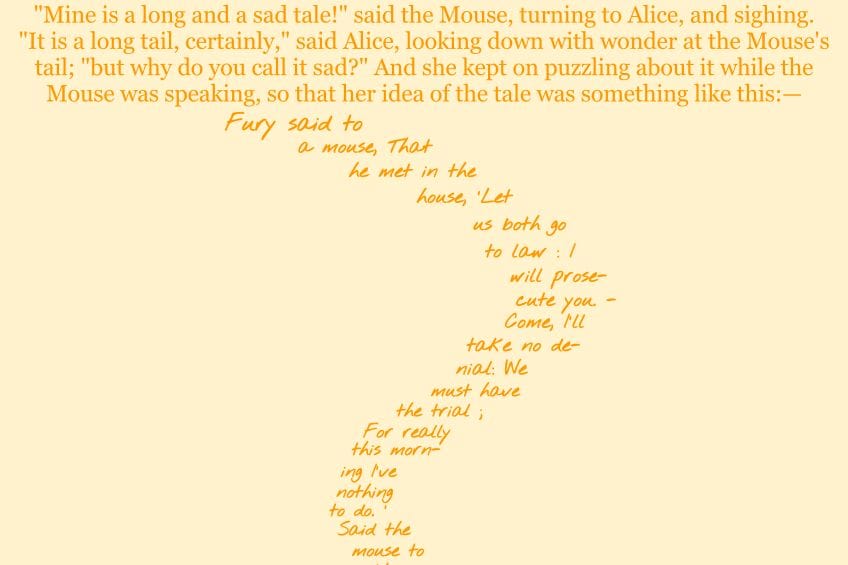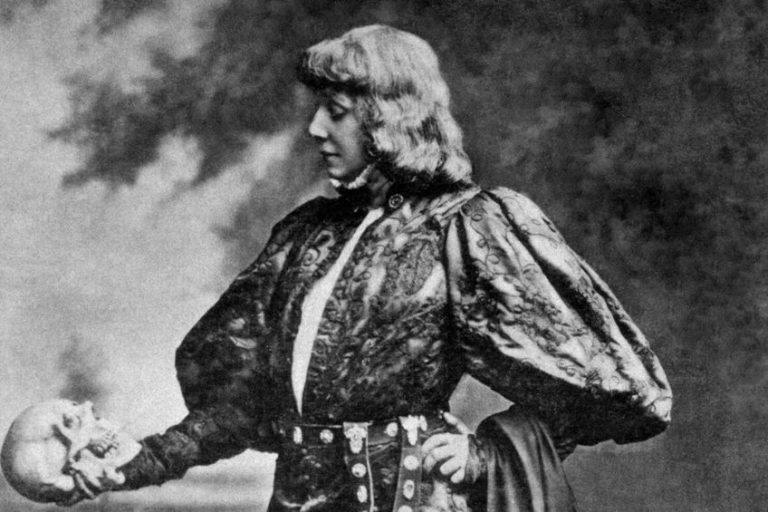How to Format a Poem – An Easy Guide for Aspiring Poets
Are you a poet? Let’s immediately stop with the idea of the aspiring poet, because if you enjoy writing poetry and it’s something that you take at least semi-seriously, you are a poet even if you are not published. So, let’s ask that again: are you a poet? If you are, then it may be beneficial to learn how to format a poem. There are many ways to do this, and in this article, I will be going over some of the basic ideas with regard to poetry formatting, how it can be used in both standard and non-standard forms, the differences between singular and poetry manuscript formatting, and a number of examples of how poetry formatting can be used in a practical sense. If you’re a poet and you want to learn these kinds of things, then learning how to format a poem is probably something that’s worth putting rather high on a list of necessary skills, and this article should help a little!
How to Format a Poem
When it comes to the concept of how to format a poem, every writer must understand that there is not one singular and universally correct way to do so. Poetry formatting comes in many different shapes and sizes. However, there are some general standards that are typically in place, but they can still vary from one publication to the next. This is also why it becomes important to discuss the differences between singular poetry formatting and poetry manuscript formatting, as they can be rather different from one another.

I will be looking at a number of these different elements today to show you how they can be used and why they also might be used. Always keep in mind that these won’t be the same everywhere. However, before we get into anything further we are first going to stop for a short time to have a look at a summary of things to come because summaries can often be a great place to start.
How to Format a Poem Summary Points
Ah, a nice little summary to help with things to come. This summary will be far from a comprehensive thing, but it should be a good primer for what follows from this section. So, there are some simple points that are worth noting going forward:
- Poetry formatting can be variable. There is no one way to format a poem because formatting can be highly different based on which poem in question is being formatted. There are poems that make use of very standard formatting and there are those that vehemently go against anything related to standard poetic presentation.
- Poetry formatting in general has guidelines rather than rules. When someone is writing poetry, there tend to be standard things that can be done. For instance, your typical poem in English will be left-aligned, make use of a standard-size font, and ordinary line spacing. However, these can also be broken!
- Poetry formatting for journals often has house styles. If you are a poet and you need to learn how to format a poem, one of the things that may make it far more straightforward is that trying to publish a poem with specific journals will often result in a submission page on their website that gives you the exact house style that they adopt. Format according to those particular rules in that case!
These few points are very simplistic and do not go into much depth, but that is not what a summary is for! If you want far more than what the summary was able to provide, you will need to keep reading. The next section that I have laid out is focused on some of the more basic elements related to how to format a poem.
So, if this summary was far from enough for you, there is a lot more in the next few sections.
The Basics of Poetry Formatting
In very basic terms, what is formatting? Essentially, it involves all of the technical aspects of writing something. So, you may have chosen the words, the way the sentences were constructed, and the placement of punctuation, but those parts are not what we generally think of when we talk about formatting. Instead, we think about things like the spacing on a page, the number of lines, the size of the font, the font that is used, and the alignment.

Imagine a novel. The pages generally make use of justified margins, meaning that there is a straight line of text on both sides of the page, it will probably have a font size that is not too big but also not too small, and the font will often be a serif font, and they will ensure that new chapters start on new pages (for the most part). These parts of the writing process are not creative like the actual composition but are rather there for practical reasons. The same is true of poetry. When we want to learn how to format a poem, we need to keep a few things in mind. Remember that a poem is not laid out like a novel. It has a very particular type of formatting that while generally similar to prose, has its own special quirks that make it distinct.
Standard Poetry Formatting
When it comes to your standard poem, you want to have formatting that is simple and easy to read. This means that you will generally have a left-aligned margin, meaning that the words are pressed against the left-hand side of the page and are read from left to right. They are not typically justified because most lines do not cover an entire page.
Font size is just as important in your standard poem, and the font size is usually at about 12 points, but when it comes to line spacing, there can be some variability.
Some poetry collections like to squash the whole poem into a single-spaced style whereas others like to spread the lines out. This is often a personal choice. Font type is often serif, but not necessarily. And, of course, poems generally start on their own page. Having multiple poems on a page only really works when the poems are incredibly short, such as limericks or haiku.
Non-Standard Poetry Formatting
Many of the elements of more standard poetry formatting from above are applicable in non-standard poetry formats too. The font size, spacing, and alignment are fairly typical parts of formatting in general. However, what about a poem that makes use of an unusual typography? Think of a poem that is arranged in the shape of a heart. You can’t force that to be left-aligned. It wouldn’t be a heart anymore!

This is one of the principal reasons why more non-standard formatting would be used. This can also be seen in poems that incorporate images into the poetry itself, such as illustrations beside the poems. Those same poems might even be placed inside an illustration, and for that, the formatting needs to be very specific. A poet might even decide to have some lines have a larger font size for some or another reason. There are many ways in which the format can be altered and changed.
Singular Poetry Format for Publication
It has already been mentioned how there can be more standard or non-standard ways of formatting a poem. However, those are generally up to personal preference and what you, as the poet, believes is the correct option for your particular poem. Things change when you want to publish your poetry though. If you self-publish, you can do whatever you want, but some poetry journals that accept submissions also have specific house styles.
Some will ignore their house style if a poem’s format requires a certain unusual arrangement, but many also won’t.
For those that have strong and specific requirements, you will need to see on their submission pages what they want. However, these things are easy to do when submitting. If a poetry journal necessitates that your font is set to 12 points, uses single spacing, and is written in Times New Roman, then you can simply highlight the text in a word processor, such as Microsoft Word or Google Docs, and change those things. It is not too complicated to do.
Poetry Manuscript Format for Publication
You may be someone who publishes individual poems, and you may like to send them off to poetry journals or on your own blog (or something similar, like Instagram), but what if you want to publish a collection? A collection of poetry requires that you arrange your poetry according to a poetry manuscript format. This essentially means turning it into an actual book and ensuring that it is properly laid out.

When it comes to doing this, there are various things that you can do to have a more professional and standard-style manuscript. For instance, use a consistent font and size throughout, have the same line spacing, and choose a clear font (the most common tend to be Times New Roman, Arial, and Calibri). You will also need to have chapter breaks in your manuscript to ensure that each poem is on its own page, and it will also allow you to have a more navigable contents page.
The main thing to keep in mind is to be consistent with a poetry manuscript format, but also with all forms of poetry formatting. However, in the present day, especially if you are self-publishing, there are some great options available. For instance, Amazon’s Kindle system makes use of reflowable text that allows the reader to change things like the font and size on the fly. This is for accessibility reasons, but it also means that you don’t need to fret over the formatting all that much.
However, it is more of a headache for poetry than prose. Sadly.
Poetry Formatting Examples
While we have discussed various aspects of how to format a poem over this article, such as how to work on a poetry manuscript format, we can also look at a few individual examples of this very concept to see how it can be done. Before I get into the weeds with these poetry formatting examples, I’ll just say that the first paragraph of each will discuss the poem itself and the second will discuss the format. The format of a poem can often relate to the remainder of the poem, but not always, and generally not in terms of more standard poetry formatting.

When I do count the clock that tells the time (1609) by William Shakespeare
| Date Published | 1609 |
| Type of Poem | Sonnet |
| Rhyme Scheme | ABAB CDCD EFEF GG |
| Meter | Iambic pentameter |
| Topic | Mortality and time |
When I do count the clock that tells the time is one of the many sonnets by William Shakespeare that is concerned with concepts related to time and the dwindling of things like beauty. This poem explores how time constantly marches forward, and as we move through the years, so do our beautiful features fade away. This is one of the earlier poems in the Fair Youth sequence, and so they are typically focused on encouragement aimed at a young man, and it begs him to settle down. When it comes to the format of this poem, like every other Shakespearean sonnet, it is archetypally standard. It makes use of a specific rhyme scheme, and each line has ten syllables, which means that there is not much variability in terms of line length.
The poem can be read like ordinary prose, and your ordinary person would look at the format of this poem and simply see it as a very normal “poem” format. It is traditional.

Easter Wings (1633) by George Herbert
| Date Published | 1633 |
| Type of Poem | Concrete poem |
| Rhyme Scheme | None |
| Meter | None |
| Topic | The Fall of Man |
Easter Wings is very unlike the first and more standard poem on this list. Once we arrive at the content of the poem, it is related to the Biblical narrative of the Fall of Man. In the Bible, humanity fell from the grace of God during Genesis because of the actions of Adam and Eve in the Garden of Eden. This poem looks at the way that humanity has fallen, and it asks for the speaker to be brought up as if on the wings of angels. It is a deeply religious poem and one that may resonate with many Christian readers who stumble across it.
However, it also makes use of a very interesting bit of poetic formatting.
In this poem, there is unusual typography that would necessitate that it be printed without standard formatting principles. The reason for this is because the poem needs to be center-aligned. The first and final lines of each stanza are the longest in each stanza, and they become shorter and shorter the closer to the middle they are. This produces the image of wings for the reader. If standard poetry formatting were adopted here, the image of the wings would be lost, and that would reduce the meaning of the poem as a whole.

Acrostic (1861) by Lewis Carrol
| Date Published | 1861 |
| Type of Poem | Acrostic poem |
| Rhyme Scheme | AABB |
| Meter | Heptasyllabic |
| Topic | Dedication to three girls |
Acrostic is a poem that, in terms of its content, is written in dedication to three young girls whom Lewis Carroll knew. The poem is written in a very simple style as it is intended for children to be able to read and enjoy it. In addition, as this is intended for children, the format of the poem can also be used to the advantage of the poet, and if you too wish to write something aimed at children, then you can take pointers on how to format a poem from poems like this. The reason for this is because this poem is, as the name so originally informs us, an acrostic poem. This is a type of poem in which every first letter of each line can be read vertically to produce a message of some kind. In this case, the dedication to the three girls can be found along the first words of the poem as it is arranged using the names of said girls.
This kind of poetry formatting is baked directly into the meaning of the poem.

Spring Day (1916) by Amy Lowell
| Date Published | 1916 |
| Type of Poem | Prose poem |
| Rhyme Scheme | None |
| Meter | None |
| Topic | Spring |
Spring Day is a prose poem that is all about springtime. In more particular terms, the poem is about a particular day in spring rather than the concept of spring in general. The poem describes various things that the speaker does over the course of the poem, and it paints a strong picture of this season and what one might experience on a typical day within it. The poem has an immensely unusual format in terms of poetry though. The reason that this poem has such a strange format is because it has a very standard prose format. As an example of prose poetry, this text does not make use of lines as you would see them in your standard poem. Instead, the lines work within paragraphs like you might see in a prose text, like a short story.
It does not read like a typical poem and forcing it into the shape of a standard poem would obliterate its meaning as a prose poem.

your legs are a pitstop for men (2015) by Rupi Kaur
| Date Published | 2015 |
| Type of Poem | Free verse |
| Rhyme Scheme | None |
| Meter | None |
| Topic | Sexuality and gender |
your legs are a pitstop for men is a hard-hitting poem about female sexuality, and as with many poems by Rupi Kaur, it is short and to the point in its presentation. It states the feelings that may come with being a woman when existing within a society that favors male sexuality over any kind of feminine sensuality. This poem is located firmly within the tradition of feminist poetry, but like many of Kaur’s poems, it also incorporates literal images into the poem itself, and this transforms the poem into a very non-standard piece of poetic expression.

The poem itself is written with variable line length so that it can form a more circular-style shape. This shape is then located within a simplistic illustration of a woman’s open legs. This forces the reader to understand exactly what the poem is discussing, and the poem’s use of imagery of open legs is supplemented with an illustration of the very same thing. When it comes to poetry like this, the illustrations become necessary parts of the poem itself, and by doing this, it is far from what most poems ever attempt to do with typography in general.
There are so many different ways to learn how to format a poem as there are just various ways to actually format a poem! This article has gone over a number of those different examples of poetry formatting, from a more basic understanding of poetry formatting itself to both standard and non-standard poetry formatting, and even how to do a poetry manuscript format. However, you should still do some of your own experimentation when it comes to a topic as broad as this one. There is much to learn and much to do. You will only find your particular groove by going out there and giving it your best shot!
Frequently Asked Questions
What Is Formatting in Literature?
Formatting is a very broad term. It does not necessarily refer to one particular thing but rather to a range of different things that are related to the presentation of some piece of literature. This means that the formatting can incorporate elements like how line spacing, font size, and chapter headings are used. For instance, you don’t want line spacing that brings words too close together or an overly small font size that will make it difficult to read something, or, conversely, if you intend for a text to be easy to read for those with visual impairments of some kind, you may want to use a larger font. These things are often the more technical aspects of literary presentation.
What Is Poetry Formatting?
Poetry formatting is related to standard formatting in literature but with a particular focus on how it is used in poetry. For instance, most poems do not make use of lines that run to the end of a page, and so formatting poetry does not incorporate a need to justify margins so that they are neatly arranged as a line on the right-hand side of the page. It can be difficult to learn how to format a poem, but it’s something that gets easier with time and practice. Although, this is the case with very many things in the world.
What Is the Difference Between Standard and Non-Standard Poetry Formatting?
When it comes to formatting a poem, there are many ways that it can be accomplished. If a poem has a very standard typography, which means that it has lines that run from left to right with no special deviation, then it will make use of very standard formatting. However, a poem might incorporate large spaces, the skipping of multiple lines, the use of typography that makes the poem look like a picture, and so on. Each of these aspects is part of poetry formatting in general, but they can be vastly different from one another. One simply needs to know the correct way to commit to a specific format.
Is There an Incorrect Way to Format a Poem?
This is one of those questions that has the very annoying answer of yes and no. There is a correct way to format a poem if you are seeking publication and a journal has a specific house style. If a journal mandates that a poet make use of specific line spacing, alignment, and so on, then there is a very correct way to format a poem for that journal. However, in general, there is no correct way to format a poem because poetry is often about pushing the boundaries of language and what can be done with it. This often means breaking the supposed rules of language and can even mean formatting a text in such a way that it is intentionally difficult to read.
How Have Different Poets Formatted Poems?
Many poets have made use of poetic formatting in a number of different ways. There are those who have been incredibly standard in their presentation, such as William Shakespeare, and those who have made highly individualized poems, such as a number of those written by Lewis Carroll. For instance, Acrostic (1861) is a good example of this. There are no definitive standards that can be gleaned from the work of poets over the years because many of them choose to do things differently from what is seen as standard.
Justin van Huyssteen is a freelance writer, novelist, and academic originally from Cape Town, South Africa. At present, he has a bachelor’s degree in English and literary theory and an honor’s degree in literary theory. He is currently working towards his master’s degree in literary theory with a focus on animal studies, critical theory, and semiotics within literature. As a novelist and freelancer, he often writes under the pen name L.C. Lupus.
Justin’s preferred literary movements include modern and postmodern literature with literary fiction and genre fiction like sci-fi, post-apocalyptic, and horror being of particular interest. His academia extends to his interest in prose and narratology. He enjoys analyzing a variety of mediums through a literary lens, such as graphic novels, film, and video games.
Justin is working for artincontext.org as an author and content writer since 2022. He is responsible for all blog posts about architecture, literature and poetry.
Learn more about Justin van Huyssteen and the Art in Context Team.
Cite this Article
Justin, van Huyssteen, “How to Format a Poem – An Easy Guide for Aspiring Poets.” Art in Context. February 20, 2024. URL: https://artincontext.org/how-to-format-a-poem/
van Huyssteen, J. (2024, 20 February). How to Format a Poem – An Easy Guide for Aspiring Poets. Art in Context. https://artincontext.org/how-to-format-a-poem/
van Huyssteen, Justin. “How to Format a Poem – An Easy Guide for Aspiring Poets.” Art in Context, February 20, 2024. https://artincontext.org/how-to-format-a-poem/.









